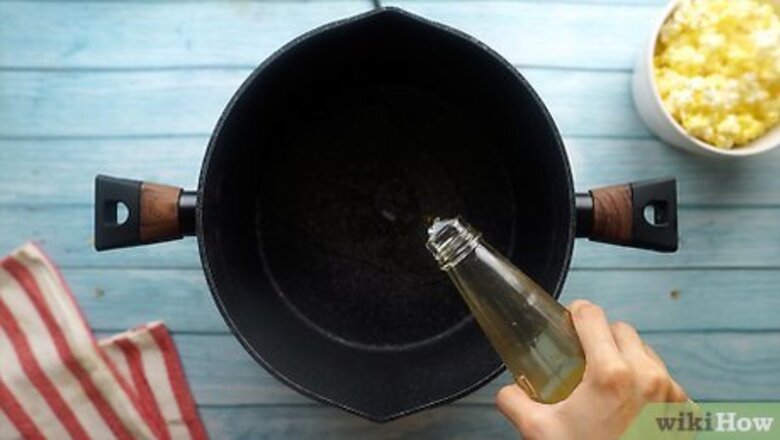
views
Following the Traditional Method
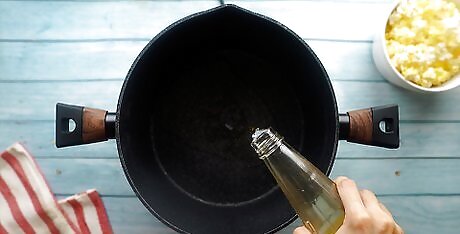
Heat the oil in a 3-quart (or larger) saucepan on medium-high heat. You'll want to use an oil with a high smoke point, like peanut, canola or coconut. If using coconut oil, allow all of the solid oil to melt before adding kernels. Make sure your pan or pot has a lid that goes with it. The best popping temperature is between 400 and 460 degrees Fahrenheit. Oil burns at 500 degrees. If your oil starts to smoke, it's too hot. You can also add salt to the oil to help season the popcorn from within, instead of adding it on top after the popcorn is fully popped.

Put 3 or 4 popcorn kernels into the oil and cover the pan. When the kernels pop, add the rest of popcorn kernels in an even layer. Cover, remove from heat, and count 30 seconds. This method first heats the oil to the right temperature, then waiting 30 seconds brings all of the other kernels to a near-popping temperature so that when they are put back on the heat, they all pop at roughly the same time.
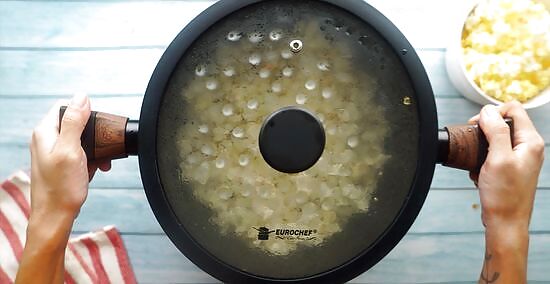
Return the pan to the heat. The popcorn should begin popping soon and all at once. Once the popping starts in earnest, gently shake the pan by moving it back and forth over the burner. Try to keep the lid slightly ajar to let the steam from the popcorn release (the popcorn will be drier and crisper this way, rather than chewy).
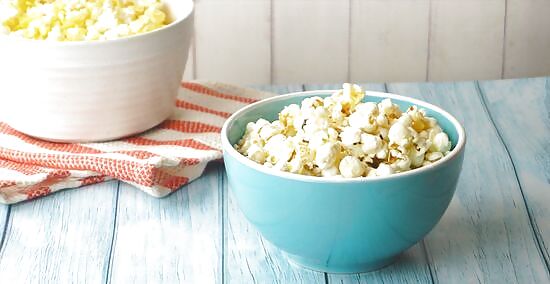
Remove the pan from heat when popping slows to about 3 seconds between pops. Remove the lid, and dump the popcorn immediately into a wide bowl.. With this technique, nearly all of the kernels pop, and nothing burns.
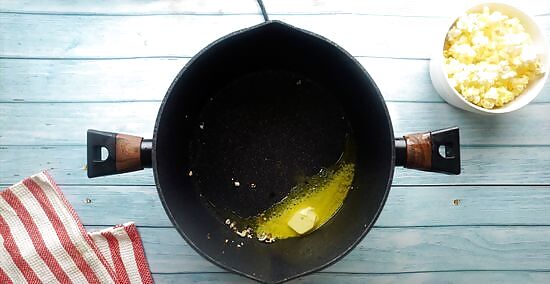
Melt butter in the now empty, but hot pan. Drizzle over popcorn and toss to distribute evenly. Note that if you let the butter get just a little bit brown, it will add an even more intense, buttery flavor to the butter and to your popcorn..
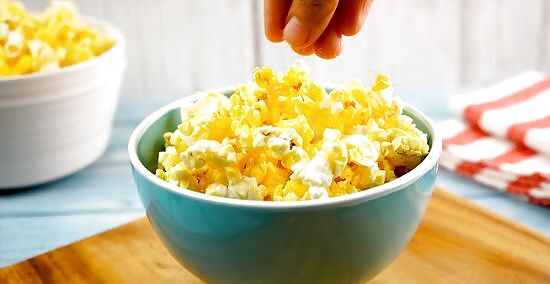
Add salt to taste. Sea salt is a great alternative to traditional table salt. You can also add other flavorings and seasonings, like smoked paprika, cayenne powder, chili pepper, curry powder, cumin, grated Parmesan or cheddar cheese, and fresh herbs like rosemary. If you want to make your own sweet and salty popcorn, sprinkle some sugar over the top and mix thoroughly while the popcorn is still hot. Alternatively, you can also add the sugar to the kernels once you've placed them in the oil and they begin to sizzle.
Using Aluminum Foil

Place the oil, popcorn, and salt in a large, 6-quart, metal mixing bowl. Cover with heavy-duty aluminum foil and poke 10 slits in the top with a knife. The slits will let the steam from the popcorn release and help make the popcorn crispier, with just the right crunch.
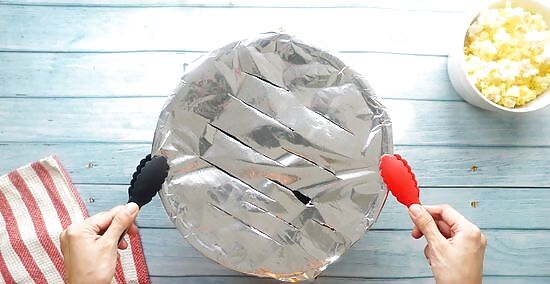
Place the bowl on the stove and turn to medium heat. Shake the bowl constantly, using a pair of tongs to hold the bowl. Continue shaking until the popcorn finishes popping, approximately 3 minutes.
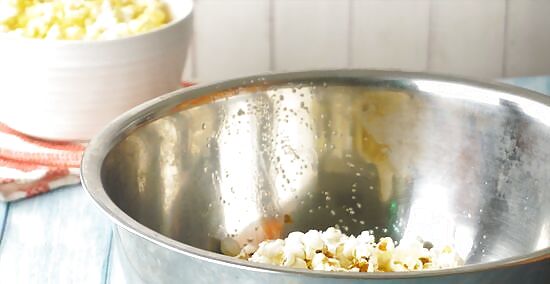
Remove the bowl from the heat and carefully remove the foil. Stir in any salt that is on the side of the bowl with a spatula.
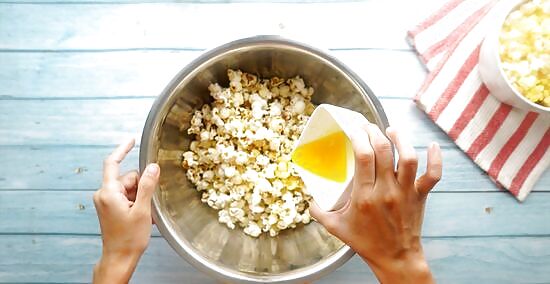
Slowly drizzle melted butter over the popcorn, while spinning the bowl. Serve immediately. This method is slightly quicker than the traditional method, since you don't test 3 or 4 kernels and then wait the 30 seconds once those have popped. This method also creates fewer dishes, since the bowl you use on the stove to pop the kernels is also the bowl you serve the freshly popped popcorn in. Make sure that the bowl is cool enough to be passed around or placed in someone's lap. If it's still too warm, put a dishtowel underneath it.


















Comments
0 comment